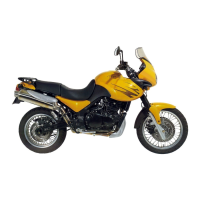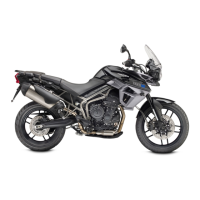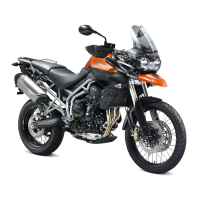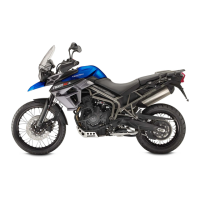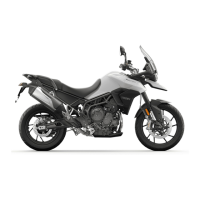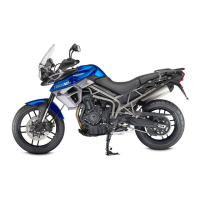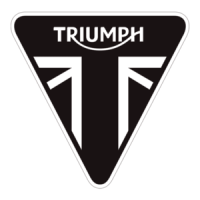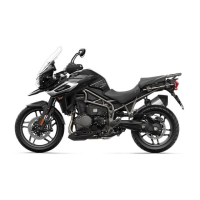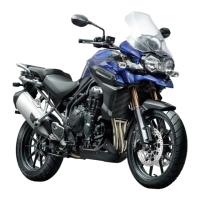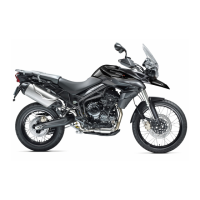How to Ride the Motorcycle
78
General
Make sure the motorcycle has been
maintained according to the scheduled
maintenance chart.
Steering
Check that the handlebar turns
smoothly without excessive free play or
tight spots. Make sure that the control
cables do not restrict the steering in any
way.
Luggage (if fitted)
Make sure that any luggage containers
are closed, locked and securely fitted to
the motorcycle.
Brakes
Check that the front and rear brakes are
functioning properly. Check that the
system is functioning by ensuring that
the ABS indicator light does not remain
illuminated at speeds above 6 mph
(10 km/h).
Tyres
High-speed operation is hard on tyres,
and tyres that are in good condition are
crucial to riding safely. Examine their
overall condition, inflate to the correct
pressure (when the tyres are cold), and
check the wheel balance. Securely fit the
valve caps after checking tyre
pressures. Observe the information
given in the Maintenance and
Specification sections on tyre checking
and tyre safety.
Fuel
Have sufficient fuel for the increased
fuel consumption that will result from
high-speed operation.
The handling characteristics of a
motorcycle at high speed may vary
from those you are familiar with at
legal road speeds. Do not attempt
high-speed operation unless you have
received sufficient training and have
the required skills as a serious
accident may result from incorrect
operation.
The items listed are extremely
important and must never be
neglected. A problem, which may not
be noticed at normal operating
speeds, may be greatly exaggerated
at high speeds.
The exhaust system is fitted with a
catalytic converter to help reduce
exhaust emission levels. The catalytic
converter can be permanently
damaged if the motorcycle is allowed
to run out of fuel or if the fuel level is
allowed to get very low. Always make
sure you have adequate fuel for your
journey.
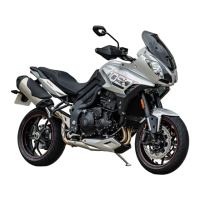
